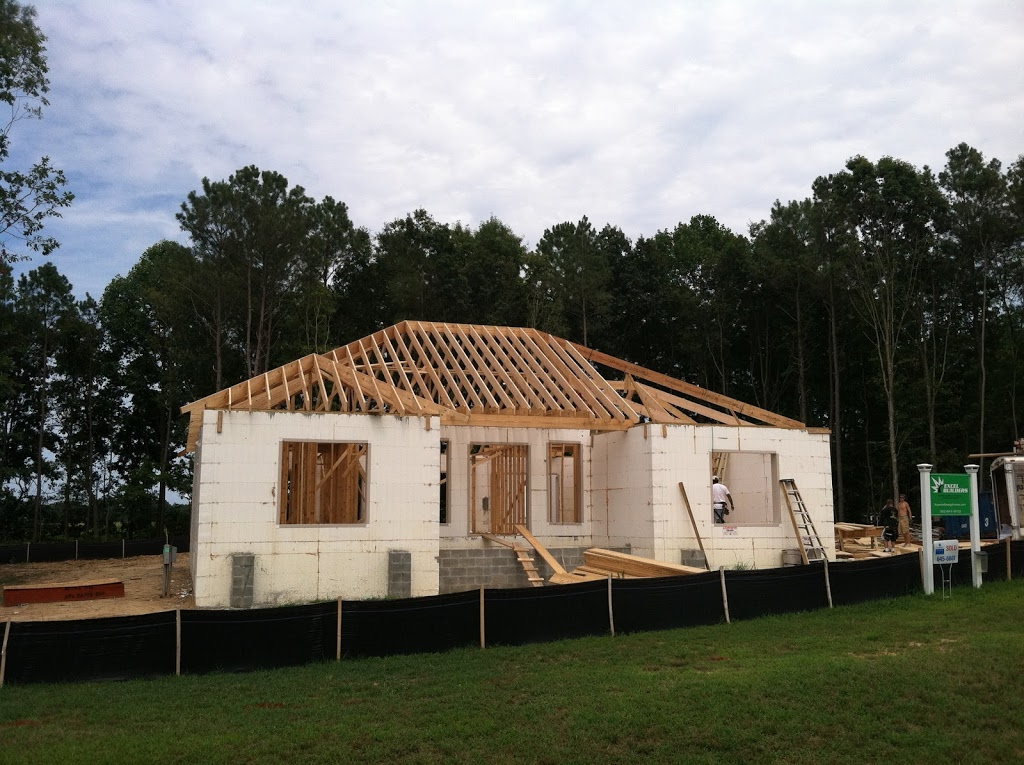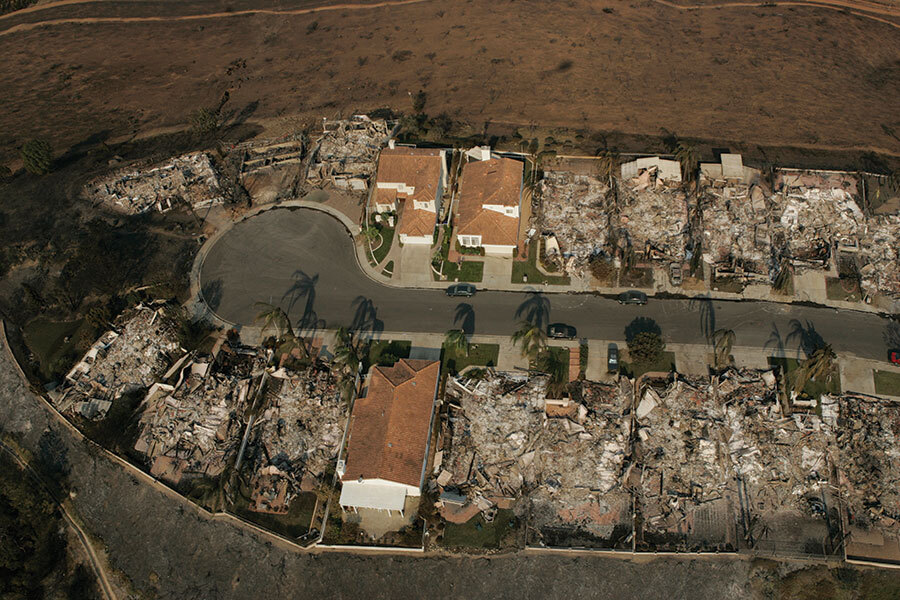
4 Reasons to Rebuild with ICF Walls After Wildfire Devastation

Choosing Fox Blocks Insulated Concrete Forms (ICF) for rebuilding after wildfires can greatly improve the resilience and safety of new buildings against future fires. Fox Blocks ICFs are known for their excellent fire resistance that offers a crucial defense with fire ratings of two to four hours based on concrete core thickness.
They stand out because they burn slowly (flame speed under 25) and produce minimal smoke (under 450) to help ensure the safety of both the structure and its occupants during wildfires.
Wildfires are a powerful natural force that can devastate landscapes and communities by wiping out large areas and destroying many buildings every year. In 2023, wildfires in the U. S. burned around 2.7 million acres that significantly affected both natural and man-made environments. These fires damaged or destroyed over 2,200 buildings, which highlights the constant risk that wildfires present to homes and residential areas.
After such disasters, communities and government agencies like FEMA come together to help with recovery, which demonstrates the vital importance of being resilient and prepared for wildfire threats.
Key Considerations for Rebuilding After a Wildfire

Working together, the Federal Emergency Management Agency (FEMA), Firewise Communities, the Federal Alliance for Safe Homes, and the Institute for Business and Home Safety offer detailed advice on how to rebuild homes and buildings to better withstand wildfires. It’s essential to understand how wildfires start and spread to make this process effective.
What Makes a Wildfire Start and Spread?
The rapid spread and intensity of wildfires are influenced by fuel types, weather conditions, and landscape topography. Specific factors include:
Tree crowns can significantly expedite the spread of wildfires, which demonstrates the critical nature of managing vegetation to reduce fire risks.
Fuel, weather, and topography are the main factors that influence the speed and intensity of a wildfire's spread.
The close arrangement of structures can facilitate the quick transfer of flames from one building to another, which underscores the importance of spatial planning in fire-prone areas.
A combination of high temperatures, low humidity levels, strong winds, and drought conditions can substantially elevate wildfire ignition risks. Additionally, fires on slopes greater than 30 percent can propagate significantly faster than on flat terrains.
Why Buildings Are Vulnerable to Wildfires
Buildings can be damaged by wildfires in several ways, and the materials used and the design of the building are crucial factors:
Radiant Heat: This form of heat transfer is capable of igniting materials without direct contact, which highlights the need for fire-resistant building materials.
Convection: The upward movement of hot air can spread fires to higher elevations and across distances, which makes vertical fire barriers a critical consideration.
Firebrands: Embers carried by wind can ignite fires far from the original source, which necessitates comprehensive external fire defense
Advantages of ICF Construction in Wildfire Recovery

Utilizing Insulated Concrete Forms (ICFs) in rebuilding efforts offers a robust solution against future wildfires:
Fuel Reduction
Establishing defensible space around structures can significantly deter the advance of wildfires.
Exterior Wall Defense
ICF walls serve as an effective barrier against fire penetration to preserve the integrity of internal spaces and prevent structural damage.
Thermal Resistance
ICF's ability to withstand extreme temperatures without compromising structural integrity makes it an ideal material for fire-prone regions.
This approach emphasizes not only the recovery, but also the enhancement of building resilience against wildfires, to help ensure that rebuilt structures are better prepared to withstand future fire events.
Seven Reasons Why Building with ICF Walls Protects Against Wildfire
1. Superior Temperature Resistance
ICF walls maintain structural integrity under extreme heat to resist warping, twisting, or burning. In firewall tests, such as those conforming to ASTM E119 standards, ICF has been proven to withstand temperatures up to 1093°C (2000°F) for as long as four hours by offering significantly more protection than wood-frame walls, which can fail in under an hour.
2. Reduced Flame Spread
ICF construction limits the spread of flames more effectively than traditional wood framing. According to ASTM Test Method E-84, flames on ICF surfaces spread at just one-fifth the rate observed on wood surfaces, which makes ICF structures less likely to contribute to wildfire propagation.
3. Self-Extinguishing Properties
Many ICF products incorporate flame retardants that enable the material to extinguish itself in the event of a fire. This critical feature means that ICF constructions do not add fuel to fires, which helps to prevent the spread of flames.
4. Effective Fire Barrier
The use of ICF for interior walls creates efficient firebreaks within structures. These concrete walls can endure intense heat for up to four hours, to provide valuable time for firefighting efforts and evacuation, which is significantly more than the resistance offered by standard wood-frame constructions.
5. Energy Efficiency and Insulation
Beyond their fire-resistant capabilities, ICF walls offer exceptional thermal insulation. This energy efficiency can help in maintaining lower interior temperatures during hot conditions, to potentially reduce the risk of ignition from internal sources during wildfire incidents.
6. Environmental Resistance
ICF structures are not only resistant to fire, but also to other environmental threats such as high winds, earthquakes, and pests, which makes them an ideal choice for building in areas prone to various natural disasters.
7. Air Quality and Safety
The materials used in ICF construction do not off-gas toxic substances when exposed to fire, which contributes to better air quality and safety for occupants during and after a wildfire event.

The photo was taken in 2007 after a wildfire destroyed a San Diego suburb. Only the ICF homes on the street survived the fire. https://www.icfmag.com/2008/08/fireproof-icfs/
Enhancing Structural Resilience in Wildfire-Prone Areas
When rebuilding in the aftermath of wildfire devastation, prioritizing a comprehensive fire-resistant design is critical. Beyond the robust protection offered by wall construction, such as Insulated Concrete Forms (ICFs), several additional design elements and materials contribute significantly to a structure's overall resilience against fires:
Roofing Materials
Opt for Class-A roofing materials renowned for their fire resistance, including asphalt shingles, slate, clay tiles, metal, cement, and concrete products. These materials are less likely to catch fire from airborne embers or flames, which is an added layer of protection from above.
Sub-Roofing
Incorporating a fire-resistant sub-roof adds another barrier against heat and embers to further safeguard the interior of the home from wildfires.
Windows and Glazing
Employing fire-resistant glazing options, such as double-pane and tempered glass, can prevent windows from shattering under intense heat, which reduces the risk of indoor ignition.
Vent Covers
Securely covering vents with non-combustible screens can block wind-blown embers from entering the structure, a common cause of internal fires during wildfire events.
Landscaping and External Cleaning
Regularly removing potential fire fuels from the property, including dead foliage from yards and gutters, minimizes the chance of fire spreading close to the structure. Strategic landscaping can also serve as a firebreak that provides a buffer zone that slows the advance of a wildfire towards the building.
Additional Measures:
Non-Combustible Siding: Choosing siding materials like brick, stucco, or fiber cement can greatly enhance a home's resistance to wildfire damage.
Fire-Resistant Decking: Composite materials, stone, or concrete patios are safer alternatives to traditional wooden decks, which can act as fuel in a fire.
Emergency Access: Ensure that the property is easily accessible for firefighters and emergency vehicles, which is crucial for effective response in the event of a fire.
Integrating fire-resistant designs and materials can greatly improve a home's ability to survive wildfires. This strategy not only aims to prevent initial damage, it also enhances the home's safety and durability by offering reassurance to those in fire-prone areas.
Responding to the Escalating Wildfire Threat with Enhanced Building Practices
The rise in both the frequency and severity of wildfires, along with longer fire seasons, highlights the critical need for fire-resistant construction methods when rebuilding. It's crucial to use a well-designed wall system that can greatly slow down the spread of flames and smoke, from the outside in and inside out.
An excellent wall system for rebuilding after a wildfire is Fox Blocks ICF. The 6-inch Fox Blocks have an ASTM E119 fire rating of four hours (twice the two-hour requirement), and ASTM E84 reported values for flame speed of below 25 and smoke development of below 450. Other fire-resistant features for rebuilding after a wildfire include fire-resistant roofs, glazings, and vents. In addition, the surrounding area must be free of fire fuel.